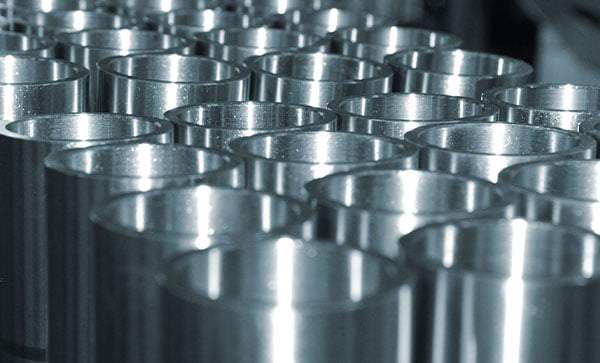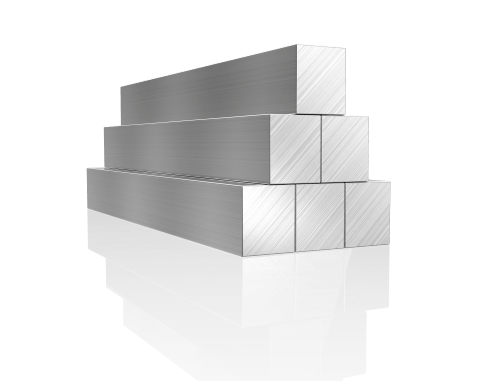Shandong Qilu lndustrial Co.,Ltd.
Benefits of Choosing Cold Steel Drop Forged Products
Introduction

In today’s competitive manufacturing landscape, the selection of materials and production techniques significantly impacts product quality, durability, and cost-effectiveness. Cold steel drop forging stands out as a preferred method due to its ability to produce high-strength components with exceptional precision and reliability. This blog explores the myriad benefits of opting for cold steel drop forged products, showcasing why they are a superior choice across various industries and applications.
What is Cold Steel Drop Forging?
Cold steel drop forging is a metal forming process where a heated steel billet is shaped under high pressure in a closed die to achieve the desired final shape. Unlike hot forging, which involves heating the material to very high temperatures, cold forging is performed near room temperature, resulting in enhanced material properties and dimensional accuracy. The process typically involves stages such as raw material selection, heating and preforming, the actual forging operation, and finishing steps like trimming and heat treatment to achieve the desired mechanical properties.
Process Overview
- Raw Material Selection: Cold steel drop forging begins with the careful selection of raw materials, usually low carbon or alloy steels that offer excellent mechanical properties suitable for forging.
- Heating and Preform: The selected billet is heated to a temperature that facilitates plastic deformation but does not alter the material’s structure significantly, ensuring controlled grain flow and mechanical properties.
- Drop Forging Process: The heated billet is placed in a die cavity and subjected to rapid, localized deformation under high pressure from a drop hammer or mechanical press, shaping it into the desired form.
- Cooling and Finishing: After forging, the component undergoes controlled cooling to set its final microstructure, followed by trimming, machining, and surface treatment to meet dimensional tolerances and surface finish requirements.
Material Properties
- Strength and Durability: Cold steel drop forged products exhibit superior strength and durability compared to those manufactured through other methods. The controlled deformation process aligns the grain structure, enhancing mechanical properties such as tensile strength, fatigue resistance, and impact toughness.
- Surface Finish: The forging process improves surface finish quality, reducing the need for additional machining operations. This results in smoother surfaces with minimal surface defects, enhancing the component’s aesthetic appeal and functional performance.
Advantages of Cold Steel Drop Forging
Cold steel drop forging offers several distinct advantages that make it a preferred choice in various industries:
Enhanced Mechanical Properties
- Tensile Strength: Cold forging increases the tensile strength of steel components by refining the grain structure and eliminating voids and porosity.
- Fatigue Resistance: The uniform grain flow achieved through cold forging reduces stress concentrations, enhancing the component’s fatigue resistance and extending its operational life.
- Ductility: Cold forged products maintain excellent ductility, allowing for complex shapes and intricate designs without sacrificing material integrity.
Improved Material Integrity
- Grain Structure: The controlled deformation process of cold forging results in a refined grain structure that enhances material strength and toughness.
- Reduced Porosity: Unlike casting or some hot forging methods, cold forging minimizes porosity and internal defects, ensuring uniform material density and structural integrity.
- Superior Surface Finish: Cold forged components typically require minimal surface finishing operations due to the smooth, defect-free surfaces achieved during forging.
Cost Efficiency
- Material Savings: Cold forging utilizes raw materials more efficiently compared to machining or casting, minimizing waste and reducing material costs.
- Reduced Machining Time: The dimensional accuracy and near-net shape achieved in cold forging reduce the need for extensive machining operations, saving time and labor costs.
- Lower Energy Consumption: Cold forging requires less energy input compared to hot forging, contributing to lower production costs and environmental impact.
Applications of Cold Steel Drop Forged Products
The versatility of cold steel drop forging makes it suitable for a wide range of applications across industries:
Automotive Industry
- Suspension Components: Cold forged steel parts like control arms and tie rods offer superior strength and durability, crucial for reliable vehicle performance.
- Transmission Parts: Gear blanks and shafts produced through cold forging withstand high torque and load conditions, enhancing transmission efficiency and longevity.
- Steering Linkages: Cold forged steering components ensure precise steering response and durability under varying driving conditions.
Aerospace and Defense
- Aircraft Landing Gear: Cold forged landing gear components provide the strength and reliability required for safe aircraft operation, withstanding extreme stresses during takeoff and landing.
- Missile Components: Cold forged missile parts such as guidance fins and structural components ensure precise performance and reliability in critical defense applications.
- Armored Vehicle Parts: Cold forged armor plates and structural components offer superior ballistic protection and durability for military vehicles operating in hostile environments.
Consumer Goods
- Hand Tools: Cold forged wrenches, pliers, and hammers offer ergonomic designs, enhanced durability, and improved performance for professional and DIY applications.
- Cutlery: Cold forged knife blades and utensils exhibit sharp edges, excellent edge retention, and corrosion resistance, meeting the demands of chefs and culinary enthusiasts.
- Sporting Equipment: Cold forged components such as golf club heads and bicycle frames provide lightweight, durable solutions that enhance performance and user experience.
Environmental Benefits
In addition to performance advantages, cold steel drop forging offers environmental benefits that align with sustainability goals:
Waste Reduction
- Scrap Minimization: Cold forging minimizes material waste by utilizing raw materials efficiently and producing near-net shape components, reducing scrap generation.
- Recyclability: Steel forged components are highly recyclable, supporting circular economy principles and reducing environmental impact.
- Greenhouse Gas Emissions: The energy-efficient nature of cold forging reduces greenhouse gas emissions compared to traditional manufacturing methods, contributing to environmental sustainability.
Case Studies and Examples
To illustrate the practical benefits of cold steel drop forging, consider the following case studies:
Case Study 1: Automotive Component Supplier
A leading automotive supplier adopted cold forging for steering knuckles, reducing component weight by 20% while enhancing strength and fatigue resistance. This improvement translated into better fuel efficiency and extended product life, contributing to customer satisfaction and cost savings over the product lifecycle.
- Case Overview: Details of the project scope, objectives, and challenges faced.
- Performance Metrics: Quantitative data on weight reduction, material savings, and production efficiency improvements.
- Customer Testimonials: Feedback from the automotive manufacturer regarding product quality, performance, and overall satisfaction.
Case Study 2: Industrial Equipment Manufacturer

An industrial equipment manufacturer integrated cold forged shafts and gears into their product line, achieving significant cost savings through reduced machining and material costs. The switch to cold forging also improved product reliability and customer retention, establishing a competitive advantage in the market.
- Implementation Details: Insight into the transition process from traditional manufacturing methods to cold forging.
- Cost Savings Analysis: Comparative analysis of production costs, including material savings and reduced labor expenses.
- Long-Term Benefits: Strategic advantages gained from adopting cold forging, such as improved product quality, market competitiveness, and customer trust.
Conclusion
In conclusion, the benefits of choosing cold steel drop forged products are multifaceted, encompassing enhanced mechanical properties, cost efficiency, broad application versatility, and environmental sustainability. As industries evolve and demand higher performance standards, cold forging remains a cornerstone of modern manufacturing, offering tangible advantages that translate into superior products and operational efficiencies.
FAQ
Q:What are the main advantages of cold steel drop forging over hot forging?
A:Cold forging preserves material strength and reduces energy consumption compared to hot forging, resulting in superior mechanical properties and cost savings.
Q:Is cold steel drop forging suitable for small-scale production?
A:Yes, cold forging is scalable and adaptable to both large-scale and small-scale production runs, offering flexibility and cost-effective manufacturing solutions.
Q:How does cold steel drop forging contribute to sustainability?
A:Cold forging minimizes material waste, reduces energy consumption, and supports recyclability, aligning with environmental sustainability goals and regulatory requirements.
